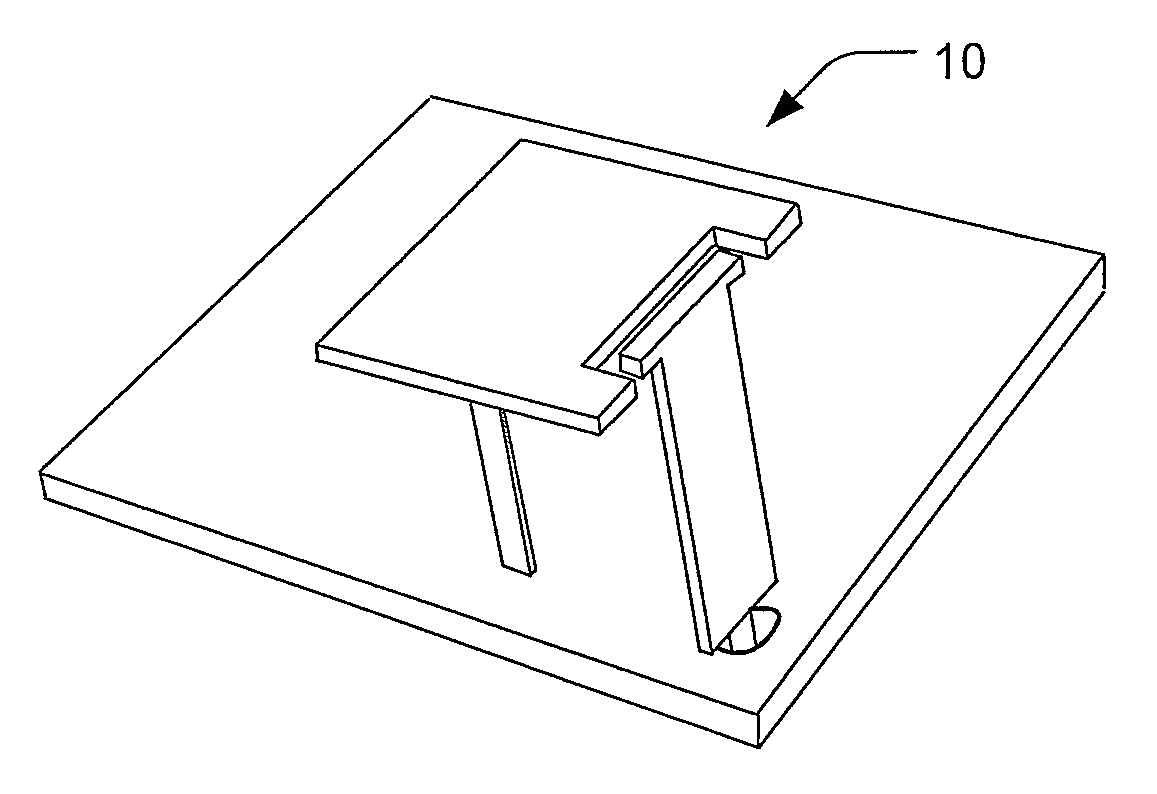Multi-Band or Wide-Band Antenna
a multi-band or wide-band antenna technology, applied in the direction of resonant antennas, elongated active elements, radiating element structural forms, etc., can solve the problems of increasing the cost of antenna design to reduce size, increasing the cost of antenna design today, and high dielectric constant materials, etc., to achieve economic manufacturing and reduce the size of additional antennas
- Summary
- Abstract
- Description
- Claims
- Application Information
AI Technical Summary
Benefits of technology
Problems solved by technology
Method used
Image
Examples
Embodiment Construction
[0027]A preferred embodiment of the present invention is a multi-band antenna. As illustrated in the various drawings herein, and particularly in the view of FIGS. 1a-d, preferred embodiments of the invention are depicted by the general reference character 10.
[0028]As is common practice in this art when antennas capable of use for transmission and reception are discussed, we herein label elements and describe their roles in the context of transmission. Those skilled in the art will readily appreciate that the same elements can nonetheless also serve in reception.
[0029]FIGS. 1a-d, respectively, depict a top plan view, a left side view, a front side view, and a perspective view of an embodiment of the inventive antenna 10 that is in accord with the present invention. The antenna 10 here includes a feed point 12, a grounding conductor or grounding surface 14, a driven radiating section 16, and a parasitic radiating section 18.
[0030]The driven radiating section 16 includes a feed conduc...
PUM
 Login to View More
Login to View More Abstract
Description
Claims
Application Information
 Login to View More
Login to View More - R&D
- Intellectual Property
- Life Sciences
- Materials
- Tech Scout
- Unparalleled Data Quality
- Higher Quality Content
- 60% Fewer Hallucinations
Browse by: Latest US Patents, China's latest patents, Technical Efficacy Thesaurus, Application Domain, Technology Topic, Popular Technical Reports.
© 2025 PatSnap. All rights reserved.Legal|Privacy policy|Modern Slavery Act Transparency Statement|Sitemap|About US| Contact US: help@patsnap.com



